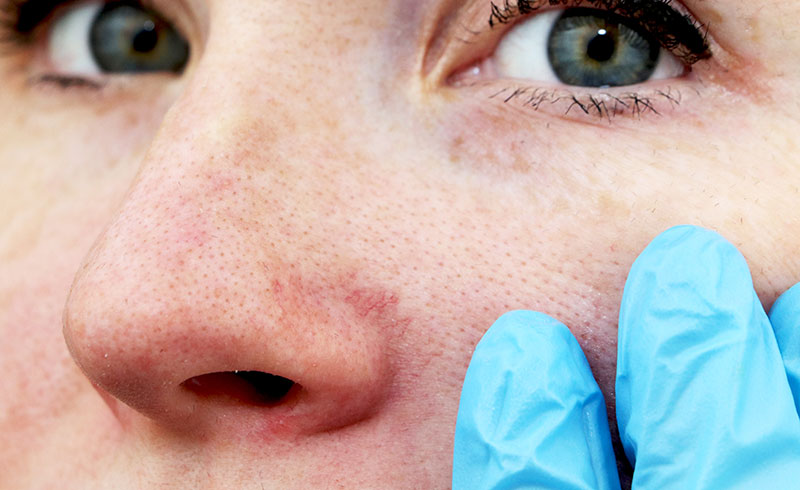Once, we lived in an age where imperfections were here to stay. Where any unsightly developments, be they caused by birth, growing older or simple rol
Once, we lived in an age where imperfections were here to stay. Where any unsightly developments, be they caused by birth, growing older or simple roll of the dice misfortune, became an unavoidable part of you.
And sure, there can be beauty in imperfection. It’s what makes diamonds unique and so prized. But it doesn’t change the fact that we’re self-conscious beings.
We have an image to maintain, whether it’s for personal pride or material gain. In today’s existence of daily stimuli overload and rigorous pressures to be better than we were before, how many of us find ourselves gazing with admiration at the flawless flowers sprouting from the field of our peers?
It’s perfectly natural. And while it can lead to unequalled ambition and drive in our quests to emulate those we revere, it comes with its own set of challenges.
For example, how do you subvert the wrath of nature?
It’s no news to most that we have more paths than ever laid before us to change our appearance, but today we’re talking about one of the lesser-known treatments. One less touted by the medical industry, and the holy grail for sufferers of the spider vein curse.
They’re known in the business as facial thread veins and owe their more sinister nickname to their web-shaped appearance.
The NHS doesn’t actively promote or offer facial thread vein removal, but from the heart of Cambridgeshire, UK, Doctor Nathan Holt and his team at the Cambridge Laser Clinic want to bring you the truth.

So what are facial thread veins?
Their official name is telangiectasia.
Facial thread veins, also known as broken veins or, more artfully, spider veins, are far from dangerous. Nonetheless, they serve as an understandably less desirable blemish, many sufferers are astonished to discover can be so simply removed.
My mind always shoots to my youth and meeting older relatives, notably those with bulgier noses. Perhaps this was the first time I ever noticed spider veins, or maybe it was the sheer power of the sight which made the memory stick. But just because this is the image my mind conjures, doesn’t mean it’s the only case.
So I invite you; picture that bulging nose, a party of red, or possibly bluish-purple strands beneath the skin’s surface, webbing their way towards the bridge. Perhaps they’re spreading across to the cheeks. I always used to wonder what those relatives had done to anger their skin so.
As it turns out, these spider veins are quite common, not restricted to the older generation, and, far from being pure rage flowing beneath the skin (as six-year-old me would have believed) have a very simple explanation.
Facial thread veins occur when veins dilate so much they can be clearly observed through the skin.
The ‘anger effect’ comes from this unusual visibility and the frequent red blush accompanying the veins. Some thread veins bring about this diffuse redness owing to dense collections of microscopic blood vessels, each so small and crammed together that they manifest as a blanket of redness, rather than singular veins of the spider’s web.
Is it a wonder that facial thread veins can seem like such a curse? The good news is, they’re not permanent. In fact, they’re remarkably easy for a dedicated dermatologist to remove.
Before we reach treatment, though, let’s dig deeper into the backstory.
What causes thread veins?
It can be quite a challenge to pinpoint the precise reason a patient might develop thread veins.
The majority of sufferers tend to be those with pale or fairer skin.
Some have a genetic predisposition, so if your grandparents are sufferers, be prepared to inherit the scourge. Sometimes all signs point unanimously to an obvious injury as the culprit, particularly head trauma, though these cases often heal as the bruising does.
The truth is, there are a number of contributory factors which can conjure the curse of spider veins.
With over twenty-five years on the Cambridge skin and laser scene, here are a handful of the causes Doctor Nathan Holt and his team have encountered.
We’ve touched on genes and injuries already. Sometimes you get dealt a rough hand. You can’t help it if you’re genetically susceptible or develop a common disease like Rosacea, which causes facial thread veins. Much like you can’t avoid all injuries your whole life. But being aware of these catalysts is a terrific first step.
How we nourish ourselves is known to be a prime instigator of facial thread veins. High levels of caffeine, spicy foods or alcohol are heavy hitters. Alcohol is one to really watch out for as, while it can dilate blood vessels temporarily, regular consumption will lead to longer-lasting outbreaks and redness.
The elements play a significant role in thread vein development, too. Excessive time in the sun can enlarge blood vessels and draw them closer to the skin, while frequent exposure to adverse or dynamic weather can affect circulation, causing the skin to flush and blood vessels to burst.
It should come as no surprise that certain chemicals and pollutants can cause this kind of skin damage, so stray as far as possible from environmental irritants.
Sudden, extreme shifts in pressure can also cause small and broken facial thread veins to appear, such as after a powerful sneeze or vomiting.
Inordinate use of steroid creams, age and long-term use of medications can each also feature in a starring role of the whodunnit show.
And finally, the hormonal changes of pregnancy can cause broken blood vessels to surface, though these spider veins typically fade after the birth.

How does facial thread vein removal work? Is it effective?
Treatment at any accredited laser clinic is the most effective remedy for facial thread veins you could ask for. If successful in completely eradicating the spider vein, they can never reappear.
Those with darker skin pigmentation should be wary that laser treatment might be less suitable for you. If you’re in the Cambridgeshire area, Doctor Nathan Holt’s practice, Cambridge Laser Clinic, offers free, no-obligation consultations so you can make an informed decision on the best route for you.
Removing facial thread veins involves directing laser light at the unwanted veins, which causes them to heat up rapidly. The spider veins then break down and collapse on themselves in a process called photothermolysis.
Practitioners use a variety of lasers to treat different colours and depths of thread vein, as well as diffuse redness, but each laser in the hands of a pro leaves the surrounding skin unharmed.
Treatments can be delivered with forced cold air or cryogen spray to reduce discomfort, and, while you may experience some bruising or swelling post-procedure, this should abate within seventy-two hours.
Wherever you go, be sure to only trust an accredited professional with the procedure.
The experts at Cambridge Laser Clinic have delivered over twenty thousand successful facial thread removals in the last quarter of a century. They’ve seen the effects of the cheap alternatives and they never end well.
Remember, professional service doesn’t need to break the bank and should hit the peak of your priorities.



















































































































COMMENTS